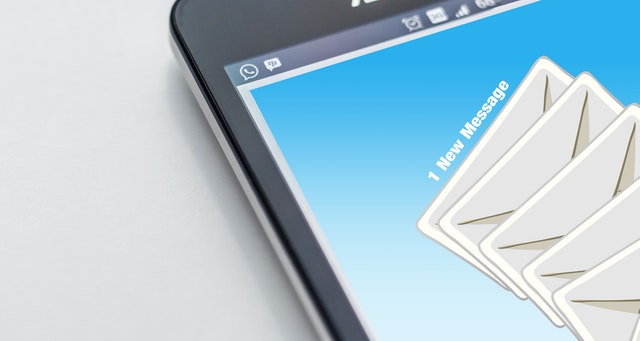We’ve come a long way since AOL, Prodigy and CompuServe showed up in the mid-1990s and ushered in one of the first major transformations of the Internet age: E-mail and almost instantaneous, paperless, stampless communications.
And for all the breathless periodic warnings that e-mail is dying – or at the very least, broken, well, not really. A report by the Radicati Group finds some 3.7 billion users around the globe send some 269 billion emails each day. As Wired reporter David Pierce writes: “Email is bigger than Facebook. Hell, it’s bigger than the Internet!”
If e-mail as we know it is not dying and not all that broken, that doesn’t mean that the system couldn’t use improvements. We all know the challenges, explains Thierry LeVasseur, an executive who has built a career around advancing e-mail communication.
Thierry LeVasseur goes on to explain that e-mail is an open standard, sparing users from the caprices of the owners of would-be successors like Facebook Messenger. There’s no compatibility issue. It’s reliable. It’s easy. It’s free. The trick is to make it better.
LeVasseur, for example, has built a group of patents that address critical pain points in e-mail’s use. His patents enable secure message transfer, under a single email address as well as complete tracking of messages during their submission. Another feature allows recipients to review information about messages, including others’ responses, before opening them. “For your eyes only” features are also covered, as well as a configurable cryptographic engine for storage. LeVasseur’s solutions are compatible with all the e-mail clients, from Gmail to Outlook.
Superhuman takes a different approach. It’s an innovation brought to you by Rahul Vohra, who was behind an early browser extension that couples information about your contacts with the e-mails they send you. Superhuman seeks to optimize the user experience, speeding up the process and bundling in various features, like read statuses and undoing sends.
Why? He and his team were addressing what e-mail – Gmail, specifically – would look like if it was designed today. He told Techcrunch: “…it would be blazingly fast; it would b e visually gorgeous; the whole thing would work offline; you wouldn’t need a multitude of browser extensions to get things done; and people would be materially faster at doing their e-mail.”
Another advance is an app called Edison, not intended as a reinvention but as a smart, automatic e-mail assistant. Interacting with Edison’s AI, this does all the scut work of e-mail management for you: Push the most important messages to the top of your list. Unsubscribe to junk mail. Manage your contacts, calendar, trips and bills.
Then there’s a whole different area of e-mail enhancements, which could be good or bad, depending on your perspective – e-mail tracking services and anti-tracking tools to stymie them. Over 40 percent of all e-mails sent every day are tracked, largely by businesses (newsletter services, marketers and advertisers among them) in a never-ending quest to profile and predict online consumer behaviors.
E-mail is not the perfect communications tool, Thierry LeVasseur, acknowledges. But various ways to make it work better – whatever your end goal – are emerging. The challenge, though, is convincing people that improvements being made are worth trying.











Pingback: Five Smart Ways to Secure Your Personal Devices - Daily Bayonet
Pingback: Everything You Need to Know About Email Security - E-PostArticles
Pingback: Email vs. Messaging Systems: Tech Experts Weigh In – Khabar Bhaskar
Pingback: What is Email Security and How do you Improve it? - Bheldi Blogs
Pingback: Importance of Email Security in the Business - eGoing
Pingback: Importance of Email Security in the Business – Viral Rang
Pingback: Importance of Email Security in the Business - Viral Rang
Pingback: Five Smart Ways to Secure Your Personal Devices | Daily Bayonet
Pingback: Five Reasons Why Your Company Needs an Email Security? | TechnoBugg
Pingback: What is Email Security? What are Top 5 Advantages of Email Encryption? – Coolwebcamavatars – Knowledge hub
Pingback: Email vs. Messaging Systems: Tech Experts Weigh In – vikas5637das
Pingback: Email vs. Messaging Systems: Tech Experts Weigh In | Chop News
Pingback: What is Email Security? What are Top 5 Advantages of Email Encryption? - Coolwebcamavatars